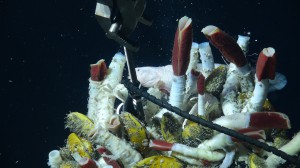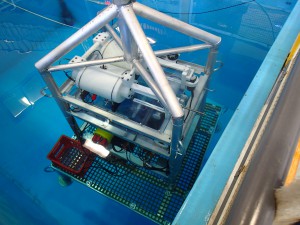Deep-sea hydrothermal vents were first discovered about 40 years ago, and they were the first ecosystems to be identified where chemosynthesis, i.e., the production of living cells from carbon dioxide (CO2) by using chemical energy, plays an important role in producing the food for the higher trophic levels. However, knowledge of the in situ metabolism of microorganisms carrying out CO2-fixation at deep-sea hydrothermal vents is very limited. Particularly lacking are studies measuring rates of autotrophic carbon fixation in situ, which is a measurement ultimately needed to constrain production in these ecosystems, and to assess their role in global biogeochemical cycles. On this upcoming cruise we are going to deploy and test a newly developed robotic micro-laboratory, the Vent-Submersible Incubation Device (Vent-SID), which represents the latest version of the SID instruments developed by Craig Taylor and engineers at WHOI. The Vent-SID makes it possible for the first time to determine rates of carbon fixation at both in situ pressures and temperatures at diffuse flow deep-sea hydrothermal vents, which is of critical importance to assess the productivity of these systems. In addition, we will also simultaneously measure rates of dissimilatory nitrate transformations and determine the involved pathways to evaluate the importance of nitrate reduction in autotrophic carbon fixation.
Specifically, we will address the following currently unresolved objectives:
- Obtain in situ rates of chemoautotrophic carbon fixation at a deep-sea hydrothermal vent site.
- Obtain in situ nitrate reduction rate measurements at a deep-sea hydrothermal vent site.
- Directly correlate the measurement of these processes with the expression of key genes involved in carbon and energy metabolism.
These in situ measurements will be complemented with incubations conducted under simulated sea floor conditions using samplers that can maintain the seafloor pressure, the so-called isobaric gastight samplers (IGT). Besides studying free-living microorganisms and their activities, the research team will further perform investigations of microbes living in symbioses with invertebrates, most importantly the giant tubeworm Riftia pachyptila, and look at microbial colonization of surfaces and the role of microbes in mineral dissolution. Finally, we will explore to find evidence for hydrothermal venting on the ridge flanks and off the ridge axis where the hydrothermal activity is known to occur. So, please come along on our adventure to study life as you don’t know it.




